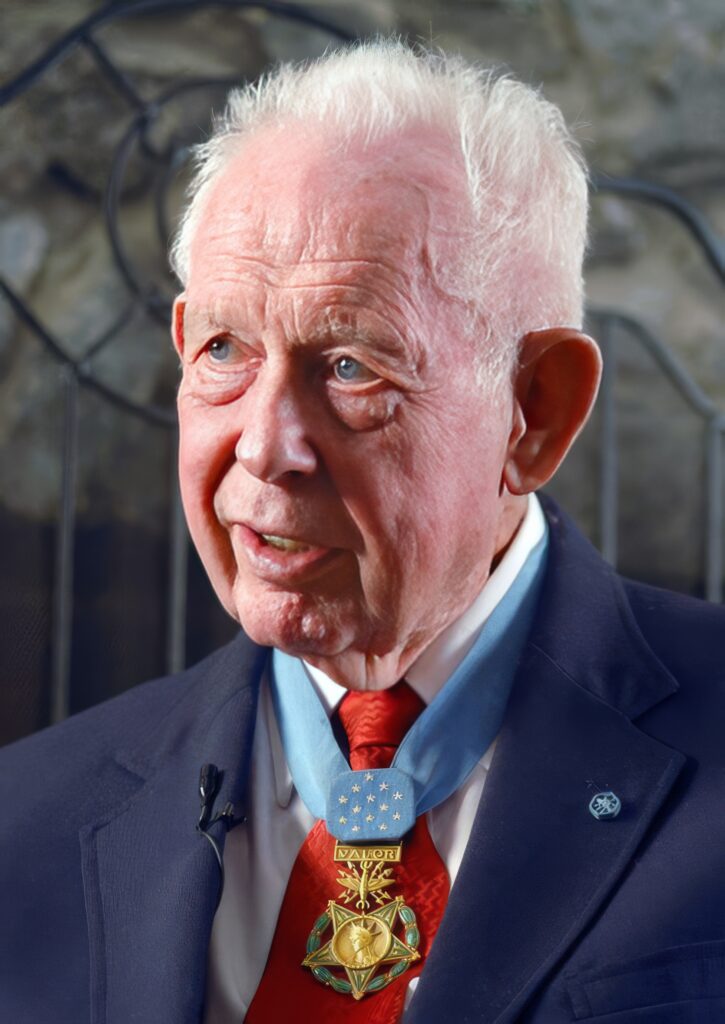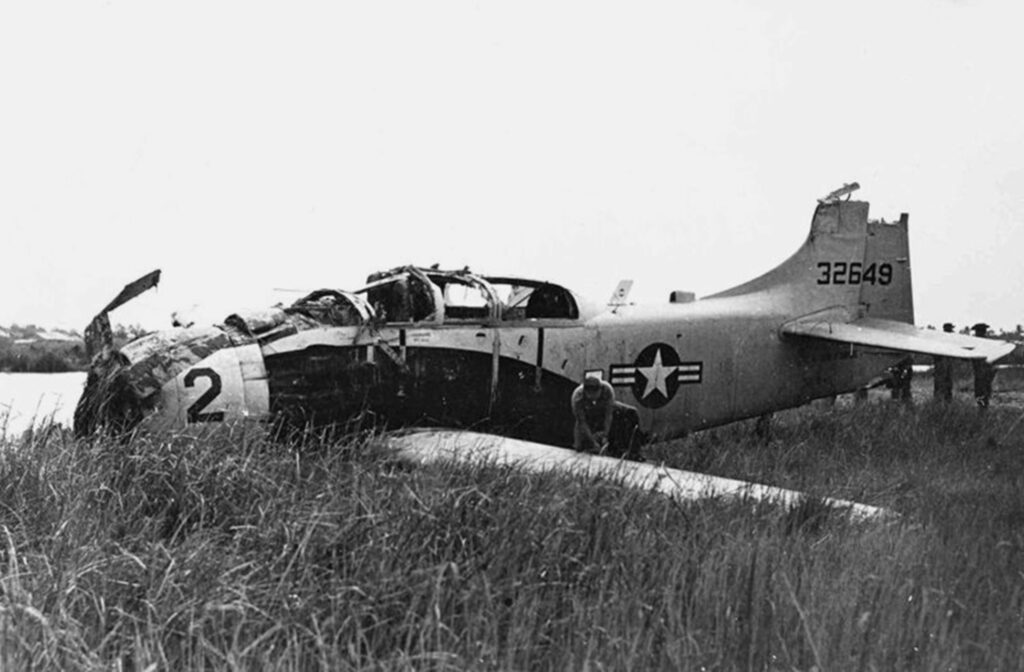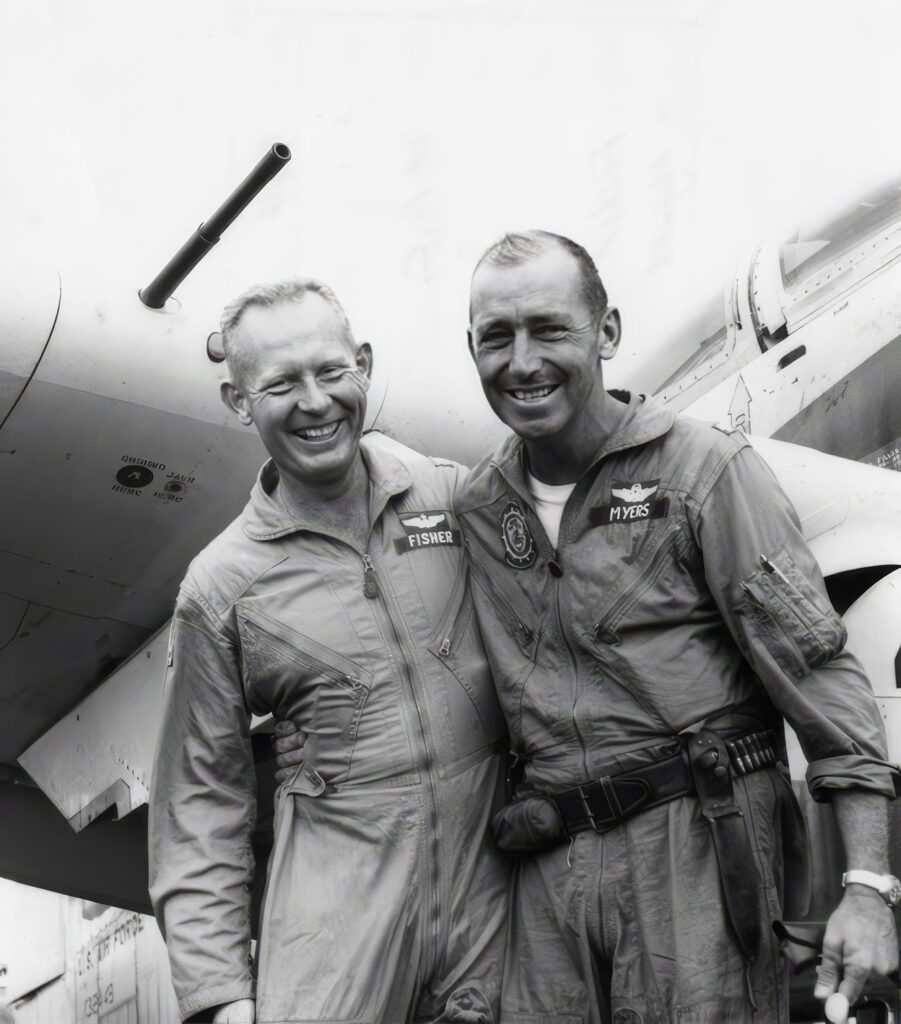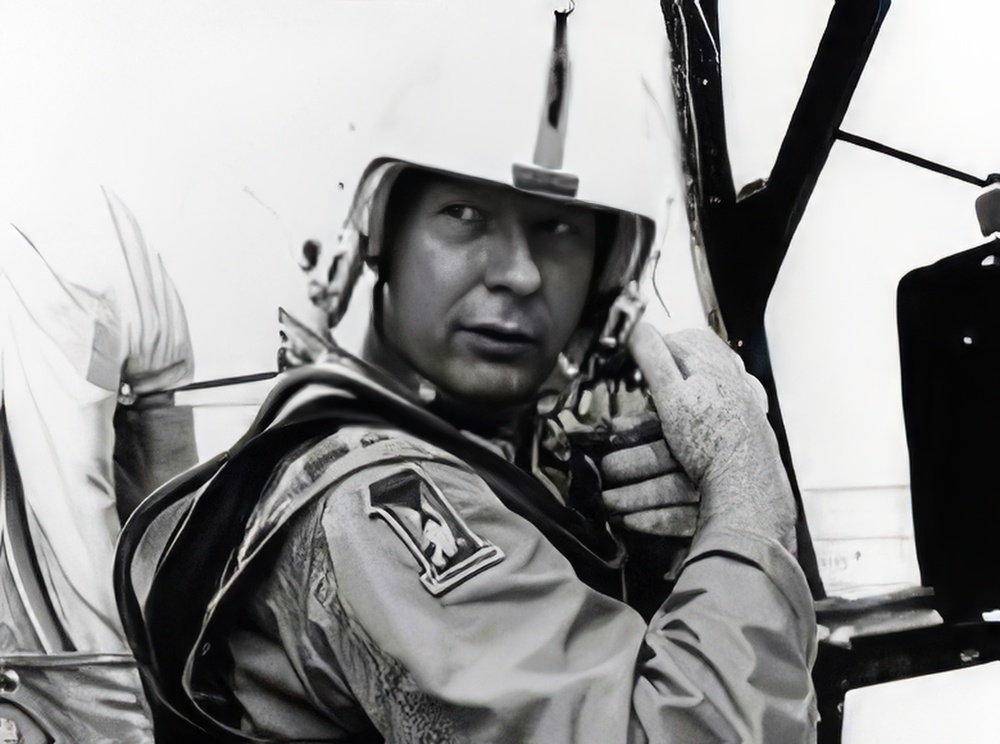It’s hard to know where to begin telling Bernard Fisher’s military story. No one could have predicted that a kid who joined the Navy at 18 to fight in World War II would eventually receive the Medal of Honor as an Air Force fighter pilot in Vietnam. No one would have guessed it would take the same man 57 years to receive his bachelor’s degree. That’s the extraordinary life of Col. Bernard F. Fisher.

Charting the Course: Bernard Fisher’s Unforeseen Military Odyssey
A native of San Bernardino, California, Fisher joined the Navy in 1945 at the end of World War II. When his time in the Navy ended in 1947, he attended Boise State Junior College and then transferred to the University of Utah—but he didn’t get to finish his degree. He joined the Idaho National Guard around the same time he began his higher education. In 1951, the same year he was supposed to graduate from college, he was commissioned in the United States Air Force.
To be clear, Bernie Fisher had done the classwork, and he earned a degree. He just never received it. It’s hard to blame him for not following up on a piece of paper. Fisher was ready to start training for one of the coolest jobs in the military: Air Force fighter pilot. He flew for the North American Air Defense Command until 1965 when he volunteered to go to South Vietnam and fly A-1E/H “Spad” Skyraiders for the 1st Air Commando Squadron.

Valor Amidst Adversity: Bernard Fisher’s Heroic Rescue Mission
Between July 1965 and June 1966, Fisher flew 200 combat sorties in the skies over Vietnam. The U.S. Navy, Marine Corps, and Air Force used A-1 Skyraiders to provide close air support to ground forces, conduct interdiction missions, and perform search and rescue operations. The close-up nature of its missions meant it was particularly susceptible to ground-based anti-aircraft fire, so 200 combat missions was no small feat.
No mission illustrated this kind of danger better than what happened on March 10, 1966. Fisher took off from Pleiku Air Base to make strafing runs against North Vietnamese forces assaulting a Special Forces camp in the A Shau Valley. The camp was surrounded by 2,000 enemy troops and cut off from its airstrip. Time was of the essence, as the special operators and their Civil Irregular Defense Group (CIDG) allies were in danger of being overrun.

When he arrived in the area, it was under dense cloud cover, but other A-1s were loitering overhead. Fisher, his wingman, and two other pilots broke through the clouds to begin making their attack runs. The clouds and terrain made the strafing runs dangerous for the pilots, however. It limited their maneuverability and forced the aircraft to operate within range of enemy gun placements.
One of the A-1s, piloted by Maj. Dafford Wayne” Jump” Myers took damage from those guns and began to go down. Myers bellied the plane down on the camp’s 2,500-foot airstrip, jumped from his plane, and retreated to the cover of an embankment nearby. The enemy was just 200 meters from Myers, and the nearest helicopter was 30 minutes away. With 2,000 NVA soldiers surrounding the base, there was nothing the Special Forces could do to help the downed pilot.
That’s when Bernard Fisher’s voice came over the radio. He told aircraft controllers he would land his two-seater Skyraider on the airfield and pick Myers up. While the Air Force warned him against that course of action, his fellow Skyraiders began giving him the cover he needed to land on the debris-strewn strip.

It wasn’t an easy landing. Debris on the runway damaged his tail section, and despite the cover provided by the other pilots, he still took 19 rounds to his fuselage. He landed and taxied the entire length of the runway. But none of the enemy attacks were enough to deter or prevent him from taking off once Myers had hopped in the backseat. With his charge picked up, Fisher gained enough speed to take off once more, with Myers safely along for the ride.
Bernard Fisher: Enduring Impact and Legacy
When Bernard Fisher returned to the United States in 1967, he received the Medal of Honor from President Lyndon B. Johnson for his daring rescue and his dedication to his fellow pilots. After the war, Fisher returned to flying interceptor missions in North America and Germany, retiring from the Air Force in 1974. But his story doesn’t end there.
In 2008, the University of Utah finally awarded Bernard Fisher his diploma in recognition of his academic and military achievements. Bernard Fisher died on August 16, 2014, at age 87. According to Fisher’s son, Bradford, Myers reportedly called Fisher every year on March 10 to wish him well. When Myers died in 1992, his daughter continued the tradition for 22 more years.
Read About Other Profiles in Courage
If you enjoyed learning about Bernard Fisher, we invite you to read about other profiles in courage on our blog. You will also find military book reviews, veterans’ service reflections, famous military units and more on the TogetherWeServed.com blog. If you are a veteran, find your military buddies, view historic boot camp photos, build a printable military service plaque, and more on TogetherWeServed.com today.

0 Comments